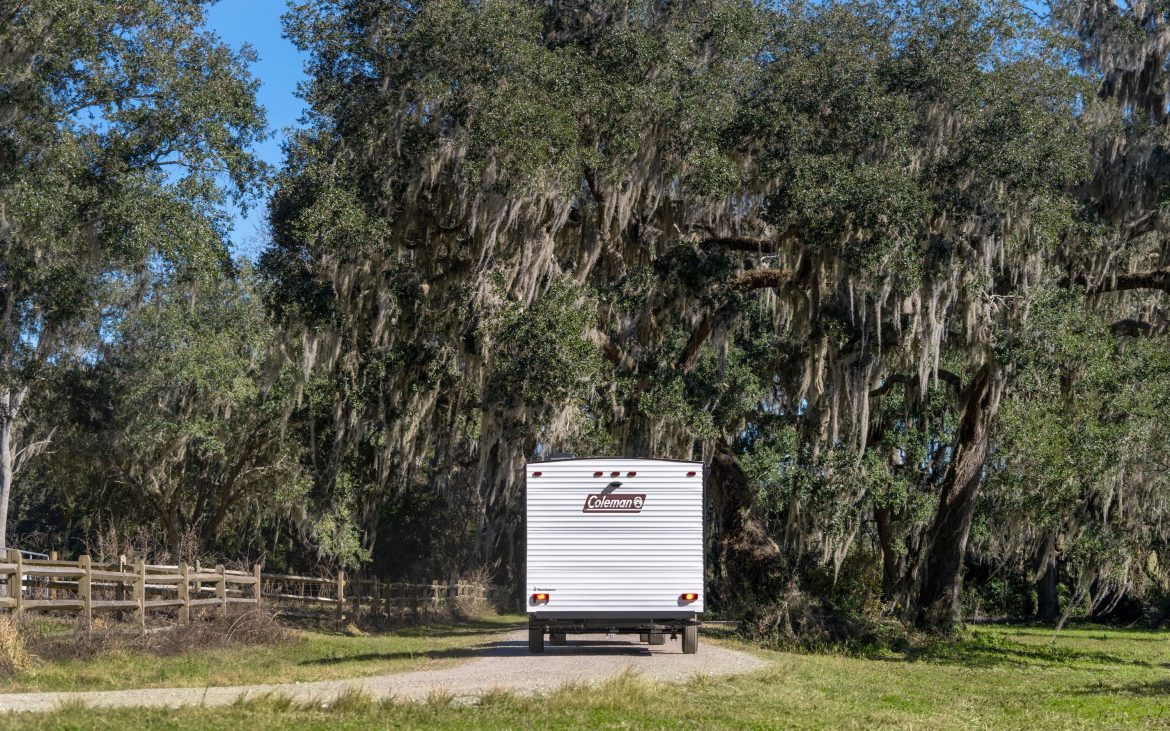
Negotiating tight turns in busy urban environments with large RVs can challenge the best of drivers. Navigating narrow roads lined with parked cars and turning wide enough to avoid striking the curb or other hazards — it requires your full attention, every time. The driving stress level fades as we leave the populated areas for the open highways of the country. Here, the RV is less confined, and the length has little restriction apart from finding a place to pull over. However, motorhomes and fifth wheel trailers have another important caution: overall height and vehicle weight.
RV weight and height

Weight — given you are on a well-traveled road — is usually not a significant issue for RVers, as most bridges will be adequate in carrying capacity for most RVs. Height, however, is a different matter. Low overhead bridges, power lines, tree branches, service location canopies, or like-structures must be observed and correctly assessed to be compatible with your RV’s height. Failure to do so leads to costly and dangerous accidents, a leading claim for many insurance providers.
Unlike objects on the roadway that are quickly steered around, overhead clearances are often not even noticed. Most GPS navigation systems direct you in the most direct route, regardless of overhead clearances or weight restrictions. In fact, many clearance accident incidents have been while following a GPS guidance system, even in buses and semi’s. More RV-specific GPS systems and GPS apps take into account certain restricted roads and highways due to low overpasses. However, these generally don’t account for low tree branches, electrical wires, service canopies, or other similar structures.
Unknown clearances

Regardless of listed heights shown on bridges etc., you will be held at fault in the event of a collision, and it won’t always be a straightforward situation. Raised resurfaced roads and natural bridge sagging may change the actual listed clearance, and you need to account for that margin of error. Overhead canopies found at many fuel stations or similar services can vary in height, and you should expect anywhere from as high as 14’ down to 8’ or less. Striking any overhead structure can result in personal injury or even a fatal event. So know the exact height of your RV to best prepare for these clearances.
How to prevent clearance incidents
The Good Sam Insurance Agency cites height clearance as one of the most common damage claims from their customers, and they note the importance of measuring the height of your RV and still allotting an additional six inches to play it safe.
Additional tips that may help you avoid common low clearance issues include:
- Avoid routes that forbid trucks. These often have low tree branches among possibly other hazards.
- Practice estimating the height of overhead canopies, and if in doubt at all, do not venture under it.
- Have someone responsible watch and report from a distance should you need to go beneath a canopy or wire.
- Know your rig’s height in feet and metric meters. Add a small buffer for safety.
- Know your rig’s gross weight in pounds, tons, kilograms, and tonnes.
- Be especially cautious when operating on private property as regulations regarding overhead clearances are not required.
When it comes to preventing any accident with your RV, awareness and defensive driving are key and likely your best defense. But you gain an upper hand by knowing the most common types of incidents RV owners typically face, like overhead clearances. Beyond avoiding incidents, this will also help you know the specific type of coverage you should identify from an RV insurance provider. To learn more, check out our comprehensive guide to RV insurance, where we discuss the importance of having RV-specific insurance and what the best type of coverage exists for your RVing lifestyle.
The post RV Overhead Clearance Issues appeared first on Good Sam Camping Blog.
By: Peter Mercer
Title: RV Overhead Clearance Issues
Sourced From: blog.goodsam.com/rv-overhead-clearance-issues/
Published Date: Wed, 24 May 2023 17:00:00 +0000
---------------------------------------------
 CampingSurvivalistHuntingFishingExploringHikingPrivacy PolicyTerms And Conditions
CampingSurvivalistHuntingFishingExploringHikingPrivacy PolicyTerms And Conditions
